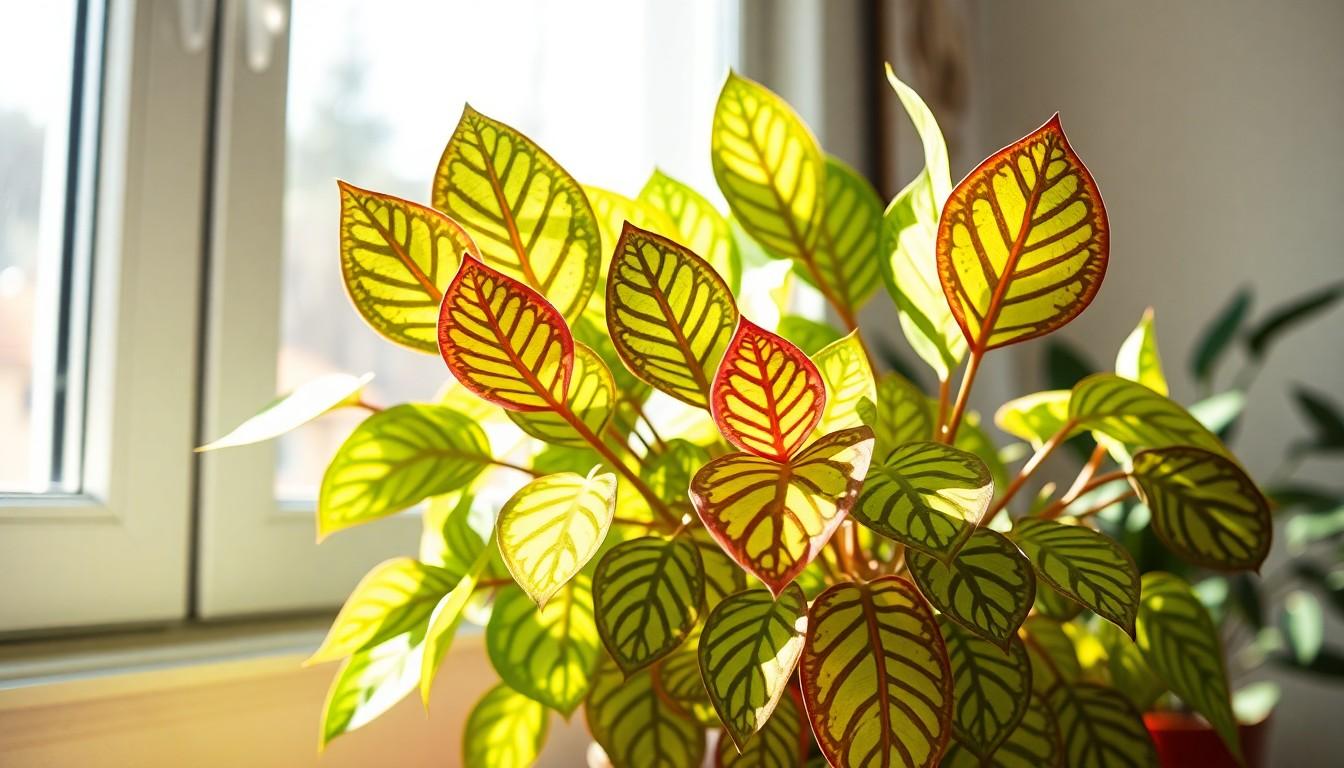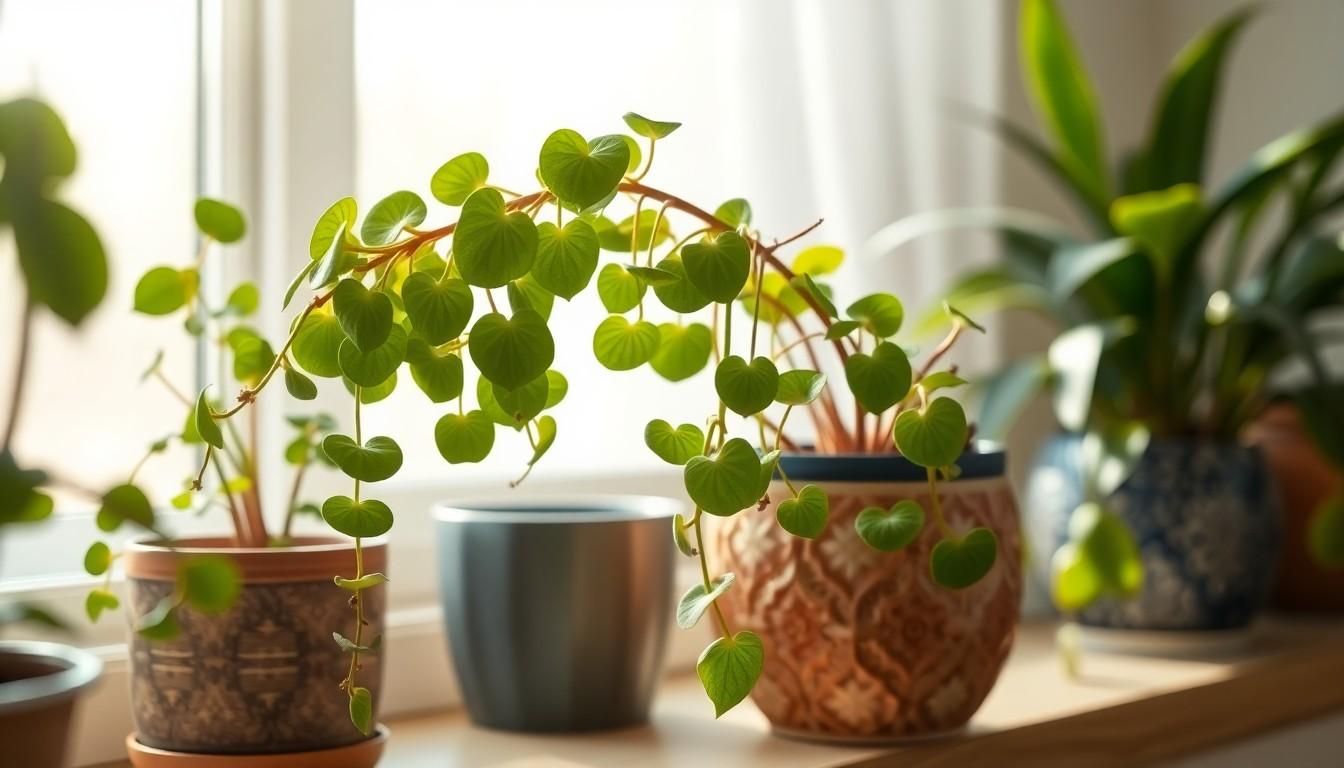If you’re on the hunt for a plant care that’s as charming as it is low-maintenance, look no further than the string of turtles. This delightful succulent, with its round, turtle-shaped leaves, is not just a feast for the eyes but also a conversation starter. Imagine your friends marveling at your green thumb while you secretly know that this beauty practically takes care of itself.
String of Turtles Plant Care
The string of turtles, or Peperomia prostrata, stands out for its distinctive appearance. Its tiny, round leaves resemble turtle shells, providing an attractive visual texture. This succulent not only enriches indoor spaces but also adds charm to gardens. Native to Brazil, it thrives in a range of environments and adapts well to various lighting conditions.
Light requirements play a crucial role in its care. Indirect sunlight promotes optimal growth, while direct sunlight may scorch the leaves. A bright location, such as near a window with filtered light, serves the plant well. Watering needs vary; it’s essential to allow the soil to dry out between waterings. Overwatering can lead to root rot, while underwatering can cause leaf drop.
Plant size typically remains compact, growing to about 12 inches long. Growth patterns include trailing vines that create a cascading effect. Propagation can easily occur with stem cuttings, ensuring more plants can be cultivated. When planted in hanging pots, the string of turtles displays its full beauty.
Soil selection impacts longevity. A well-draining soil mix, such as cactus or succulent blend, is ideal. Fertilizing should occur during the growing season, using a balanced liquid fertilizer diluted to half strength. Monthly applications support healthy growth without over-fertilization.
Pest concerns are minimal, but occasional mealybugs or spider mites may present challenges. Regularly inspecting leaves facilitates early detection. Their unique attributes make the string of turtles an excellent choice for plant enthusiasts and beginners alike.
Light Requirements
String of turtles thrives in environments with adequate light exposure. Indirect sunlight serves as the ideal condition for optimal growth.
Ideal Light Conditions
Bright, indirect light enhances the health of a string of turtles. Placing the plant near a window with filtered sunlight supports vibrant leaf color. Optimal conditions include 6 to 8 hours of indirect light daily. Direct sunlight can scorch the delicate leaves, causing damage. A spot with dappled shade from a nearby tree or sheer curtains proves beneficial for this succulent.
Signs of Insufficient Light
Leaves may become elongated or stretched if the plant lacks proper light. Yellowing leaves often indicate the string of turtles isn’t receiving enough sunlight. Additionally, slow growth or leggy stems can signal insufficient lighting conditions. Regularly inspecting the plant helps detect these signs early. Adjusting its location to brighter areas usually resolves these issues swiftly.
Watering and Humidity
Watering and humidity play crucial roles in the health of the string of turtles plant. Proper management of these two factors ensures vibrant foliage and healthy growth.
Watering Frequency
Water the string of turtles when the top inch of soil feels dry. Typically, this occurs every 1 to 2 weeks, depending on factors like light exposure and temperature. During cooler months, reduce the frequency to avoid overwatering. Overwatering leads to root rot and leaf drop, common issues for this succulent. Adjust watering practices based on the plant’s specific environment and seasonal changes for optimal growth.
Humidity Preferences
The string of turtles thrives in moderate humidity levels between 40% and 60%. While it tolerates lower humidity, consistent high humidity enhances its leaf health and overall appearance. A simple way to increase humidity involves misting the leaves or using a pebble tray filled with water. Keeping the plant away from drafts or heating vents prevents moisture loss, ensuring the leaves remain plump and vibrant.
Soil and Fertilization
Select appropriate soil for the string of turtles to ensure optimal growth. A well-draining potting mix retains moisture without becoming saturated.
Best Soil Types
Use a succulent or cactus mix, which promotes aeration and drainage. Adding perlite or pumice enhances the mix’s ability to prevent root rot. Some growers combine standard potting soil with sand, achieving an excellent balance of retention and drainage. A blend that includes coconut coir provides adequate nutrients while maintaining moisture levels.
Fertilization Schedule
Fertilize the string of turtles every 4 to 6 weeks during spring and summer. An all-purpose liquid fertilizer diluted to half strength works best, promoting robust growth and vibrant foliage. Avoid fertilizing in fall and winter, as the plant’s growth slows during these periods. Monitor the plant’s response to fertilization, adjusting frequency if necessary to prevent nutrient burn. Regular feeding supports the string of turtles in thriving and remaining healthy throughout the growing season.
Common Pests and Diseases
String of turtles plants may encounter a few pests and diseases. Regular checks for mealybugs and spider mites help maintain plant health. Mealybugs appear as white, cottony masses on the leaves, while spider mites present as tiny webs on the undersides. Yellowing leaves or stunted growth may indicate pest issues or other problems.
Identifying Pests
Spotting pests early prevents significant damage. Leaves with stippling or tiny holes often signal spider mites, which move quickly. Mealybugs cluster in leaf axils, making them easy to spot. A close examination reveals webbing or sticky residue on affected areas. Checking plants routinely aids in identifying infestations swiftly.
Treatment Options
Effective treatments manage pest issues promptly. Washing the leaves with mild soapy water dislodges mealybugs and spider mites. Applying insecticidal soap offers another solution, ensuring complete coverage on affected plants. Neem oil serves as a natural alternative, suffocating pests upon contact. Regularly monitoring and treating infested plants prevents recurrence, ensuring the string of turtles remains healthy and vibrant.
Ideal Choice for Plants
Caring for a string of turtles plant can be a rewarding experience. Its unique appearance and low-maintenance needs make it an ideal choice for any plant lover. By following the recommended care tips such as proper watering and providing adequate light, anyone can enjoy the beauty of this succulent.
Regular inspections for pests and ensuring the right soil mix will contribute to its longevity. With a little attention and care, the string of turtles can thrive and enhance any indoor or outdoor space. Embracing this charming plant not only adds aesthetic appeal but also brings a touch of nature into everyday life.


